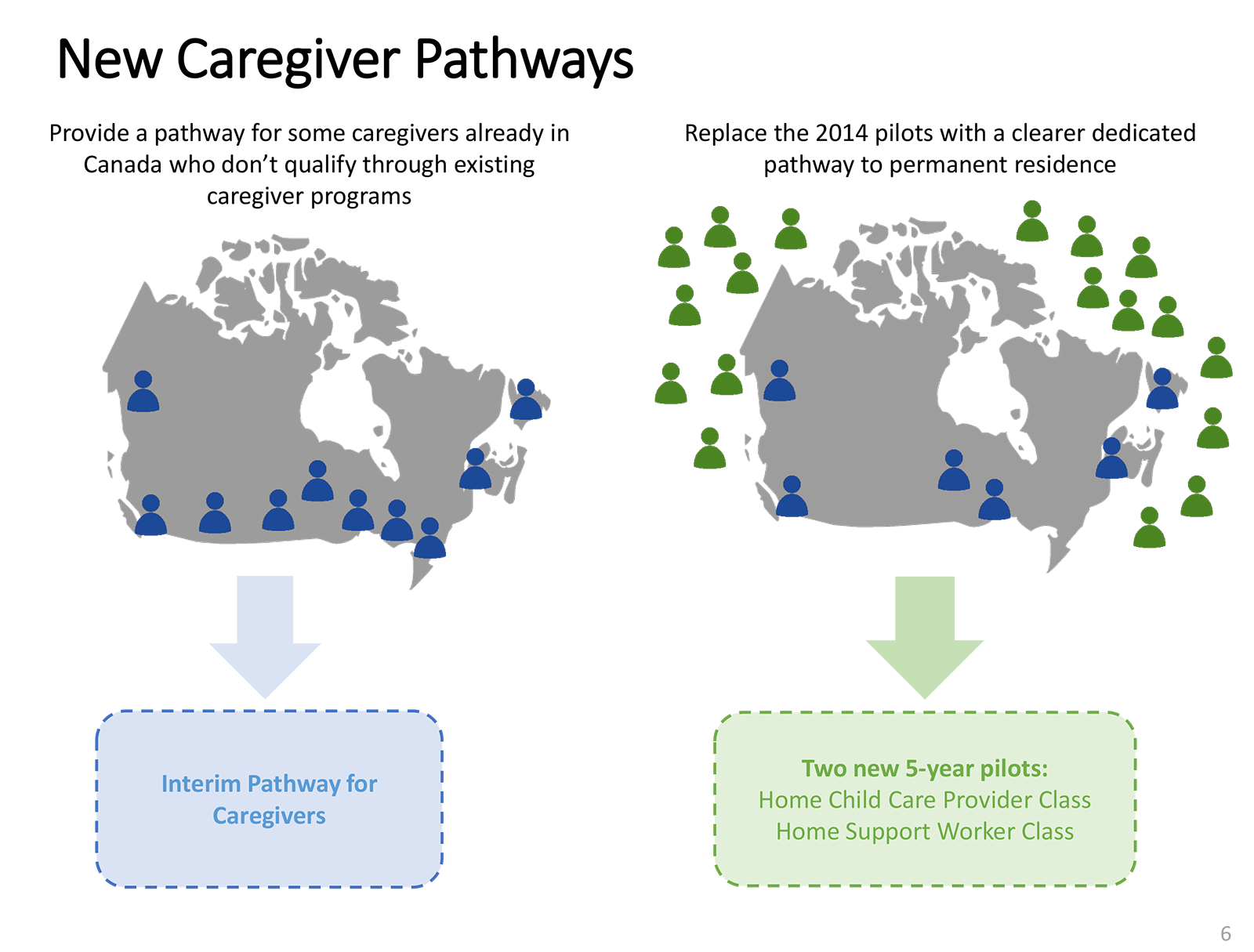Continuing on a series on Caregiver Programs offered in Canada, this week we review key findings about the 2014 pilots. We’ll have a look at why there were low uptakes and what the new immigration pilot will do for us.
2014 Pilot Key Findings
Number of Applicants
- There was a very low uptake of applications under the 2014 pilots. The annual cap was 5,500 principal applicants, but only a quarter of those applications were received in 2018.
Type of Applicants
- Majority of applications were from home child care providers and home support works. Caregivers with higher skills applied through other economic programs.
Challenges
From the stakeholders and caregivers, the Immigration, Refugees and Citizenship Canada (IRCC) found that:
- The changes in the 2014 pilot were not clearly understood. Caregivers arrived in Canada thinking they were on a secured pathway to permanent residence.
- Applicants who were interested did not fit eligibility requirements.
- As a temporary foreign worker, caregivers were limited to and dependent on a single employer. They had trouble changing employers and getting a new work permit. The nature of the job was isolating.
New Caregiver Pathways
With these findings, the IRCC has come up with two new Caregiver Pathway pilot programs to address these issues. These programs will help in two ways:
- Caregivers already in Canada and who don’t fit the requirements will have a pathway to apply for permanent residence.
- They will help interested applicants better understand the pathway to permanent residence.

Source: IRCCIP. “Briefing on New Immigration Pathways for Caregivers.” 2019. PDF file.
On our next article on the Caregiver Programs, we will learn about the Interim Pathway for caregivers program that was in place between March 4 to June 4, 2019.
Need help?
Are you a caregiver or someone looking to help your caregiver find a pathway for immigration to Canada? Contact David Aujla to get the process started.



